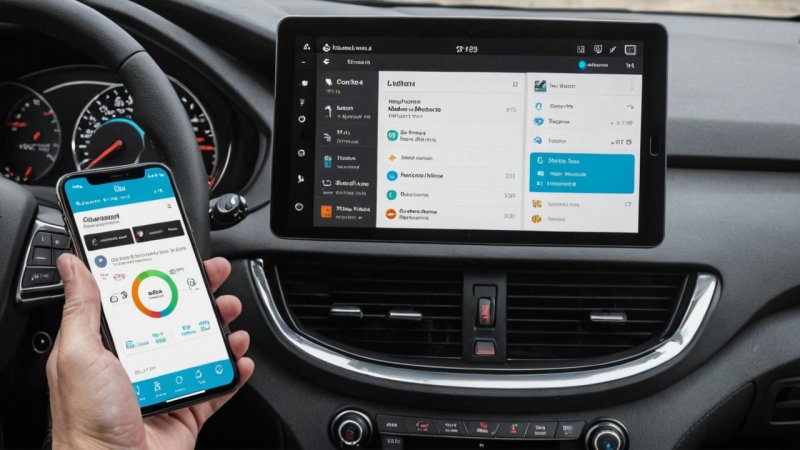In an age where technology permeates every aspect of our lives, managing car maintenance records has become smarter, more efficient, and less cumbersome than ever. Gone are the days of flipping through crumpled receipts or cluttering your glove compartment with service records. Today, with the help of various apps, devices, and digital solutions, keeping track of your vehicle’s maintenance history is not only easier but can also enhance the longevity and performance of your car. This article will explore how you can leverage technology to create, manage, and optimize your car maintenance records effectively.
Understanding the Importance of Maintenance Records
Before diving into the tools and technologies you can use, it’s crucial to understand why maintaining accurate records is vital. Regular maintenance is key to ensuring your vehicle operates efficiently and safely. By keeping detailed records, you can track when services are due, monitor the condition of the vehicle, and even enhance its resale value. Moreover, having a comprehensive history of your car’s maintenance can save you money in the long run by preventing costly repairs due to neglect.
Digital Tools for Car Maintenance
Several apps and digital platforms are specifically designed to help car owners manage their vehicle maintenance records. Here are some of the most popular options:
- Car Minder: This app allows you to log your maintenance activities, track service costs, and set reminders for upcoming services.
- AutoCare: A comprehensive app that helps you store and manage all your vehicle information, including service history, fuel economy, and expenses.
- MyCarfax: This app not only tracks your maintenance records but also alerts you about recalls and scheduled service appointments.
- Fuelly: While primarily focused on tracking fuel consumption, Fuelly also offers features to log maintenance records and monitor vehicle performance over time.
Using Cloud Storage for Easy Access
Another tech-savvy method to manage your car maintenance records is by utilizing cloud storage services. Platforms like Google Drive, Dropbox, or OneDrive enable you to store digital copies of your maintenance receipts, service records, and warranty documents. Here’s how to set it up:
- Create a dedicated folder for your car maintenance records.
- Scan or take pictures of all relevant documents and upload them to this folder.
- Organize the files by date, type of service, or mechanic to make retrieval easier.
- Share access with trusted family members or friends if needed, ensuring everyone has the necessary information at their fingertips.
Leveraging Smart Devices
With the rise of smart technology, integrating smart devices into your car maintenance routine can further streamline your record-keeping efforts. For example:
- OBD-II Scanners: These devices plug into your car’s onboard diagnostics port and provide real-time data about your vehicle’s performance. Many models come with accompanying apps that help you track error codes, maintenance reminders, and even driving habits.
- Smartwatches: If you use a smartwatch, consider downloading a car maintenance app that syncs with your device. You can receive notifications and reminders directly on your wrist.
- Connected Car Systems: Many modern vehicles come equipped with connected car technology that can automatically track maintenance needs and service appointments through the manufacturer’s app.
Creating a Maintenance Schedule
Using technology can also help you create a maintenance schedule tailored specifically to your vehicle’s needs. Many of the apps mentioned earlier have built-in scheduling features that allow you to input your car’s make, model, and year to receive personalized service recommendations based on manufacturer guidelines. Here’s how to set it up:
- Input your vehicle information into the chosen app.
- Review the recommended service intervals based on mileage or time.
- Set reminders for each service, ensuring you receive notifications well in advance.
- Log completed services within the app to maintain an accurate record.
Best Practices for Maintaining Records
To maximize the effectiveness of your tech-based maintenance tracking, consider these best practices:
- Consistency: Make it a habit to log services immediately after they are performed.
- Backup: Regularly back up your digital records to prevent loss.
- Review: Periodically review your maintenance history to identify patterns or recurring issues that need attention.
- Stay Informed: Keep abreast of manufacturer recalls and service bulletins that may affect your vehicle.
Conclusion
Embracing technology for car maintenance records not only simplifies the process but also enhances your overall vehicle ownership experience. By utilizing apps, cloud storage, smart devices, and a systematic approach to scheduling, you can ensure that your car remains in optimal condition for years to come. With accurate records, you'll be better prepared for any repairs, and with the right tools in your toolkit, vehicle maintenance can become a hassle-free task that contributes to your car’s longevity and reliability.






